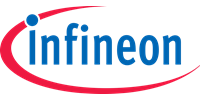Power Factor Correction
Welcome to the Infineon Power Factor Correction product training module. This module will introduce the basic concepts of Power Factor Correction and discuss the important factors affecting semiconductor component selection. It will also provide a brief overview of government regulations, describe boost converter operating modes employed in active PFC filter converters, and provide a more in depth look at the challenges for components in higher power Continuous Conduction Mode (CCM) Power Factor Correction.
PTM Published on: 2011-09-02



